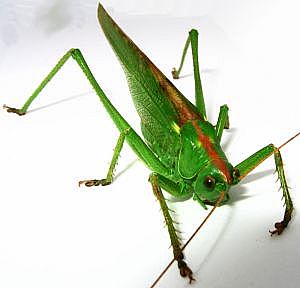When a plague of crickets starts infesting,  threatening to destroy gardens by eating through crops, ruin homes by chewing on furnishings, or irritate people with the chirping noise that they make, extermination is in order. But if one can’t stand using noxious bug spray, there’s the option of either getting a commercially-available cricket glue trap or learning how to make your own cricket trap.
threatening to destroy gardens by eating through crops, ruin homes by chewing on furnishings, or irritate people with the chirping noise that they make, extermination is in order. But if one can’t stand using noxious bug spray, there’s the option of either getting a commercially-available cricket glue trap or learning how to make your own cricket trap.
A glue trap is a kind of cricket trap that snares crickets as well as other insects with an adhesive strip. Treated with a type of insect attractant, the glue trap baits the cricket into stepping onto its sticky strip where its legs would easily get caught. It is recommended to set these traps in areas wherein crickets frequently crawl and hide, such as air conditioning vents, baseboards and doorways. They could also serve to locate which particular area of the house is susceptible to cricket infiltration. Since these pests work their way into the house from the outside, a trap set in a specific spot that gets filled much quickly would determine that that area is an easy access point for crickets.
Glue traps are easily available on the market and are usually non-toxic and environmentally-sound. A disadvantage in using them is that their adhesiveness tends to fade as time passes, giving the cricket a chance to get free. One should preferably use a non-drying brand that retains its stickiness for a prolonged period. A good glue trap brand should be usable for about 1 to 2 months.
If one wants to save money by learning how to make your own cricket trap, it is easy to do so using a few typical household items. All it takes is mixing some vanilla extract or molasses and a bit of lemon juice into a dish of water. These same ingredients are also frequently used in making the attractants utilized in the glue traps for luring their prey. Attracted by the mixture, the crickets would be drawn to the water trap and go into it, causing them to drown. One must make sure that the pests have easy access to the trap; the water dish to be used should have low walls to allow the insects to easily fall into it, and it must not be too shallow so that they will not be able to climb out to escape.
Learning how to make your own cricket trap is easy, economical and, if done right, quite effective. Hopefully, though, one’s cricket problem isn’t too serious. These insects can multiply very fast and in very large numbers, and a cricket trap can only do so much. Perhaps one can afford to set up several traps all over their home, but if the situation gets out of hand, it would be best to bring in a professional pest-control expert for help.


